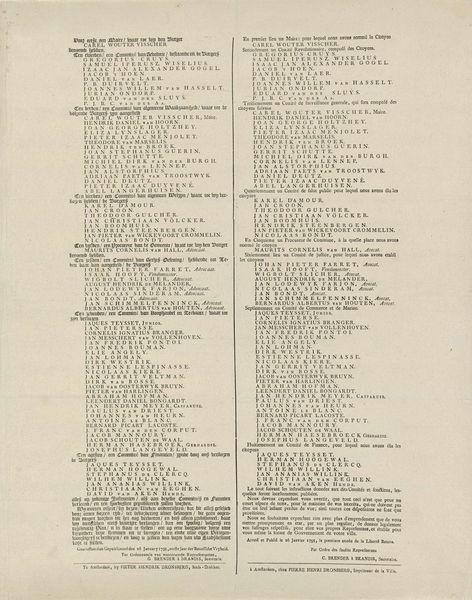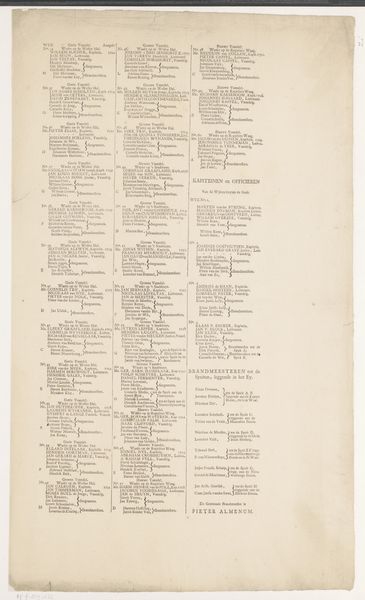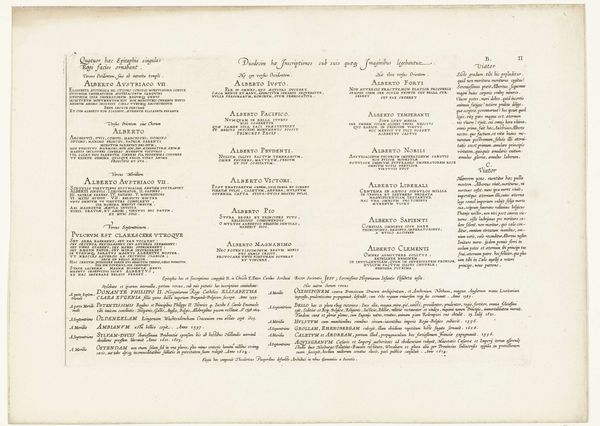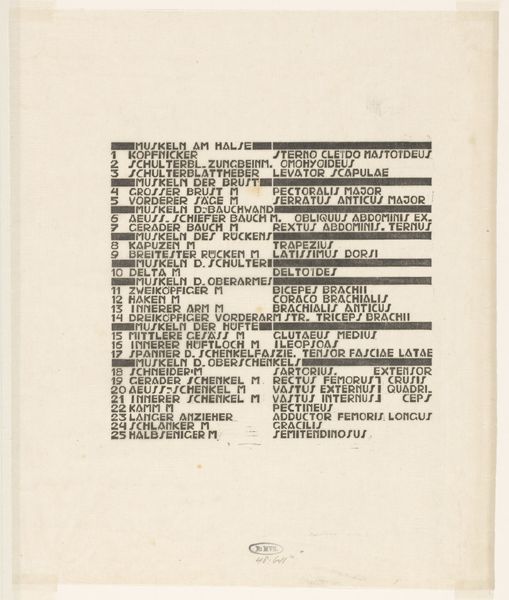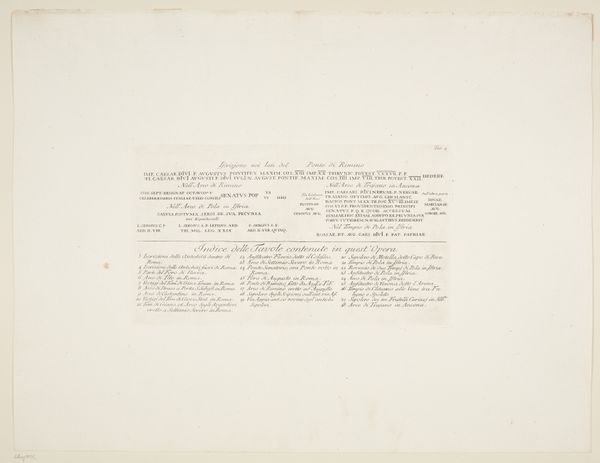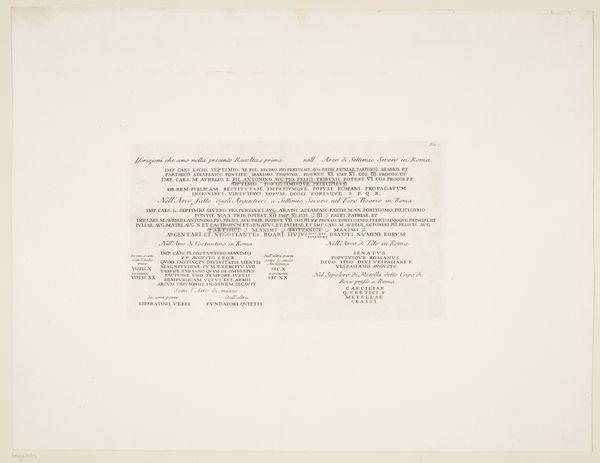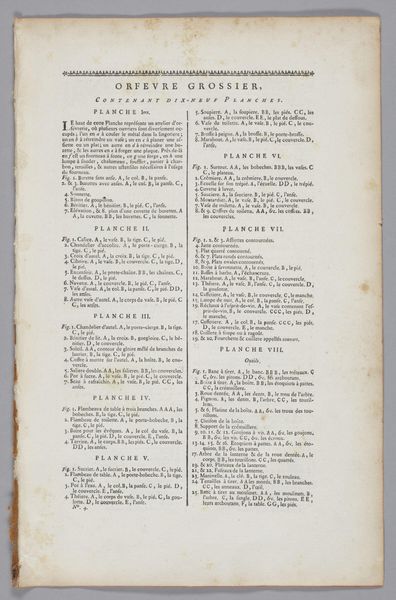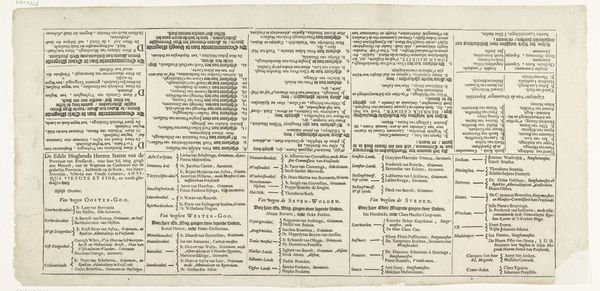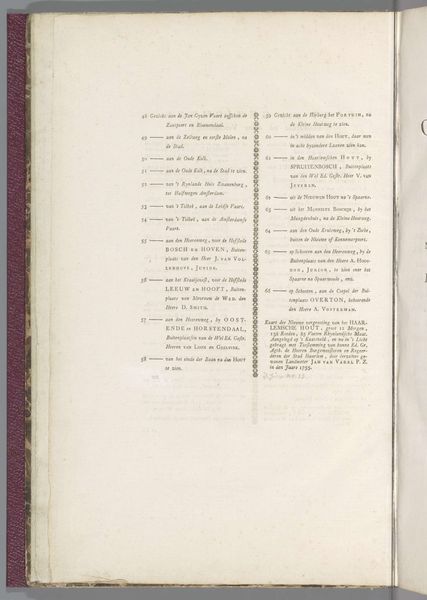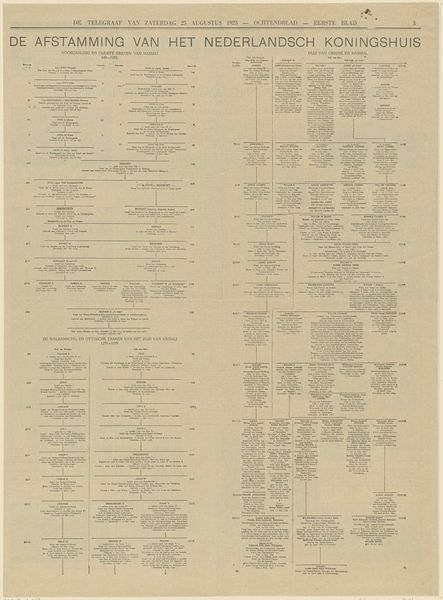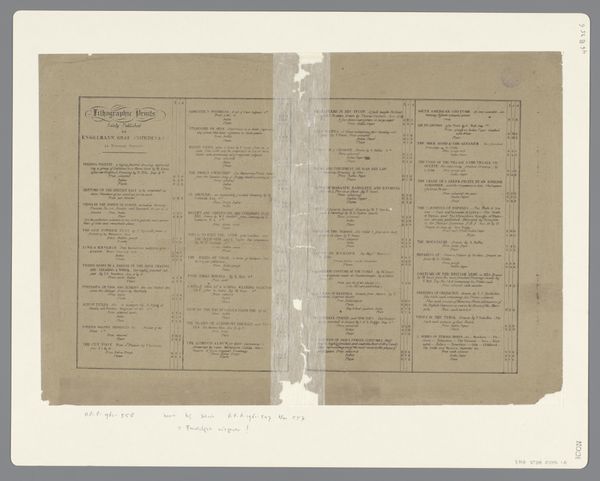
Tekstblad bij de drie platen van de zeeslag bij Doggersbank, 1781 1781 - 1785
0:00
0:00
johannessmitzoon
Rijksmuseum
Dimensions: height 448 mm, width 550 mm
Copyright: Rijks Museum: Open Domain
Editor: So, here we have "Tekstblad bij de drie platen van de zeeslag bij Doggersbank, 1781," created sometime between 1781 and 1785 by Johannes Smit & Zoon. It's an engraving on paper, primarily typography. Honestly, it mostly looks like dense text. What can we learn about its meaning? Curator: Indeed, at first glance, it's text-heavy. But consider this piece as a powerful form of historical documentation and propaganda. The Anglo-Dutch naval battles, like the one at Doggersbank, were deeply entangled with colonial power struggles and national identities. How does the layout, the division into 'plates,' and the use of Dutch and French impact your understanding? Editor: Well, the parallel text suggests it was designed for a diverse audience. The different plates must describe different moments in the battle, but I'm not sure what to make of the classical borders framing the text. Curator: Exactly. The classical border adds a layer of legitimacy, linking the Dutch Republic to a historical narrative of power and civilization. This seemingly simple piece becomes an assertion of national pride and a justification for maritime conflict during a volatile period. Consider, too, who likely consumed these prints? Editor: Wealthy merchants and politicians, I imagine, those with a vested interest in maritime power. It makes you wonder how accurately these events were portrayed and who was left out of the narrative. Curator: Precisely! Who profits? Whose narrative is prioritized? It also invites us to examine the cost of these "victories." We should always consider the social cost of armed conflict and whether power structures contribute to its continuance. Editor: This reframes how I see it completely. It’s not just an informational text; it's a deliberate construction of history with political and economic undercurrents. I’ll remember to consider how historical context shapes meaning in any artwork. Curator: A vital lesson, and one that deepens our engagement with both past and present.
Comments
No comments
Be the first to comment and join the conversation on the ultimate creative platform.
